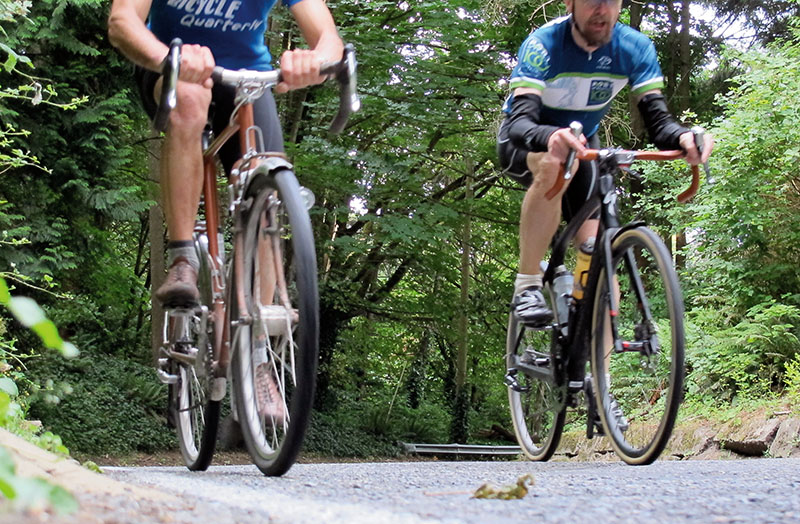Weight Limits?

We sometimes get the question whether there is a weight limit for Compass tires or components. The answer is “No”. That doesn’t mean that our components are indestructible. It’s just that we have found rider weight to be a poor predictor of component failure. Neither is power output.
Heavy and strong riders, who pedal smoothly and ride “light”, rarely break components. On the other hand, there are light riders with modest power outputs who tend to destroy components. So instead of simple weight limits, we ask you to look at each part and your riding style.

For tires, there is a weight limit of sorts: the maximum tire pressure that the casings can support. Your tire pressure is related to your weight, and if you don’t inflate your tires enough, you will get pinch flats. Our wider tires have a higher “weight limit” than narrow ones, even if their maximum inflation pressure is lower.
For example, Compass 38 mm-wide tires have a maximum inflation pressure of 75 psi (5.2 bar). At the maximum pressure, these tires will support about 150 kg (330 lb) of bike/rider weight. Our 26 mm tires have a maximum inflation pressure of 105 psi (7.2 bar). At that pressure, it will support about 110 kg (240 lb) of bike-cum-rider. There is a margin of safety in these numbers. You can overinflate your tires a bit (say 10%) if your rim is within normal tolerances. And if you weigh a bit more, your tires will deflect a bit more, too. That isn’t ideal, but usually it’s fine.
This is especially important for tandems. It’s pretty much impossible to find a good tandem tire that is narrower than 30 mm. A narrow tire that can support the pressure required for the weight of a tandem team will be harsh-riding and relatively slow. However, if you go to a 38 mm tire, you’ll find that most tandem teams can ride them at the 75 psi for which these tires are designed.
(Of course, if you weigh less, you should inflate your tires to lower pressures. The limit is just the maximum, not the recommended, pressure.)

For components, it’s trickier. Compass components are high-performance parts intended for spirited riding. We test our components to the highest “racing bike” standards for fatigue resistance, but that does not mean that they are indestructible. If you are a rider who has a history of breaking parts, then our components may not be suitable for you.
We could make our components strong enough for the riders who are hardest on their components. However, that would make them so bulky and heavy that they no longer would appeal to the other 90% of riders. It’s a trade-off, and we want to be honest about it.

So if you are a “normal” rider, even a very strong one, you probably will have no problems with our components. Compass parts are designed to the highest standards in the bike industry, and tested to the most rigorous “racing bike” test protocols. (Unfortunately, that can’t be said for all “boutique” component makers.)
And for everybody, it’s a good idea to work on a smooth pedal stroke and on “riding light” and working with the bike, rather than let it crash into the irregularities of the road. It makes you a better rider, it makes cycling more enjoyable, and it makes your components less likely to break.


